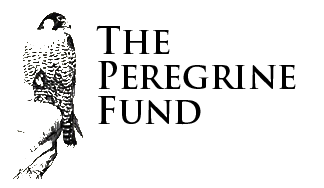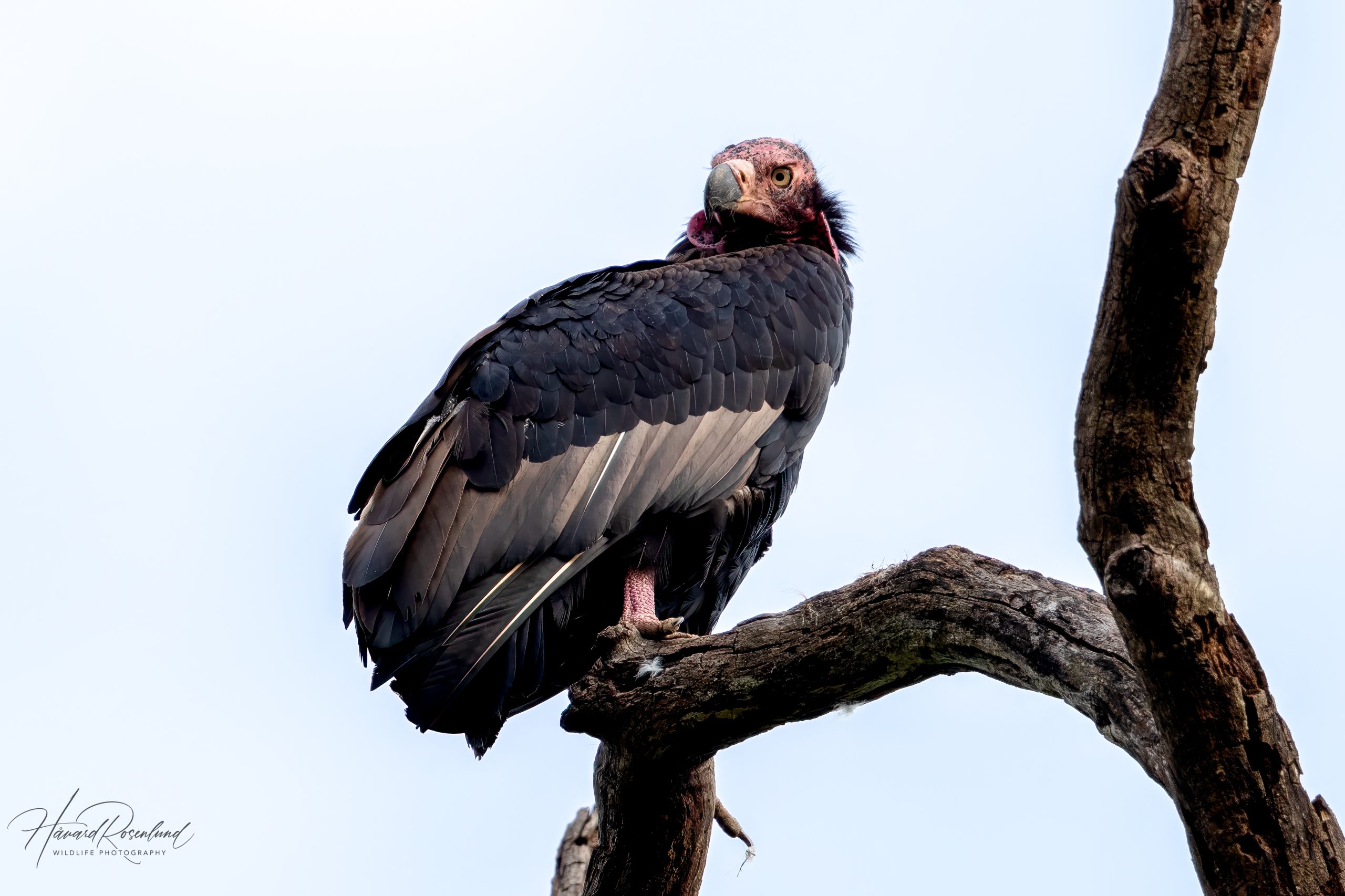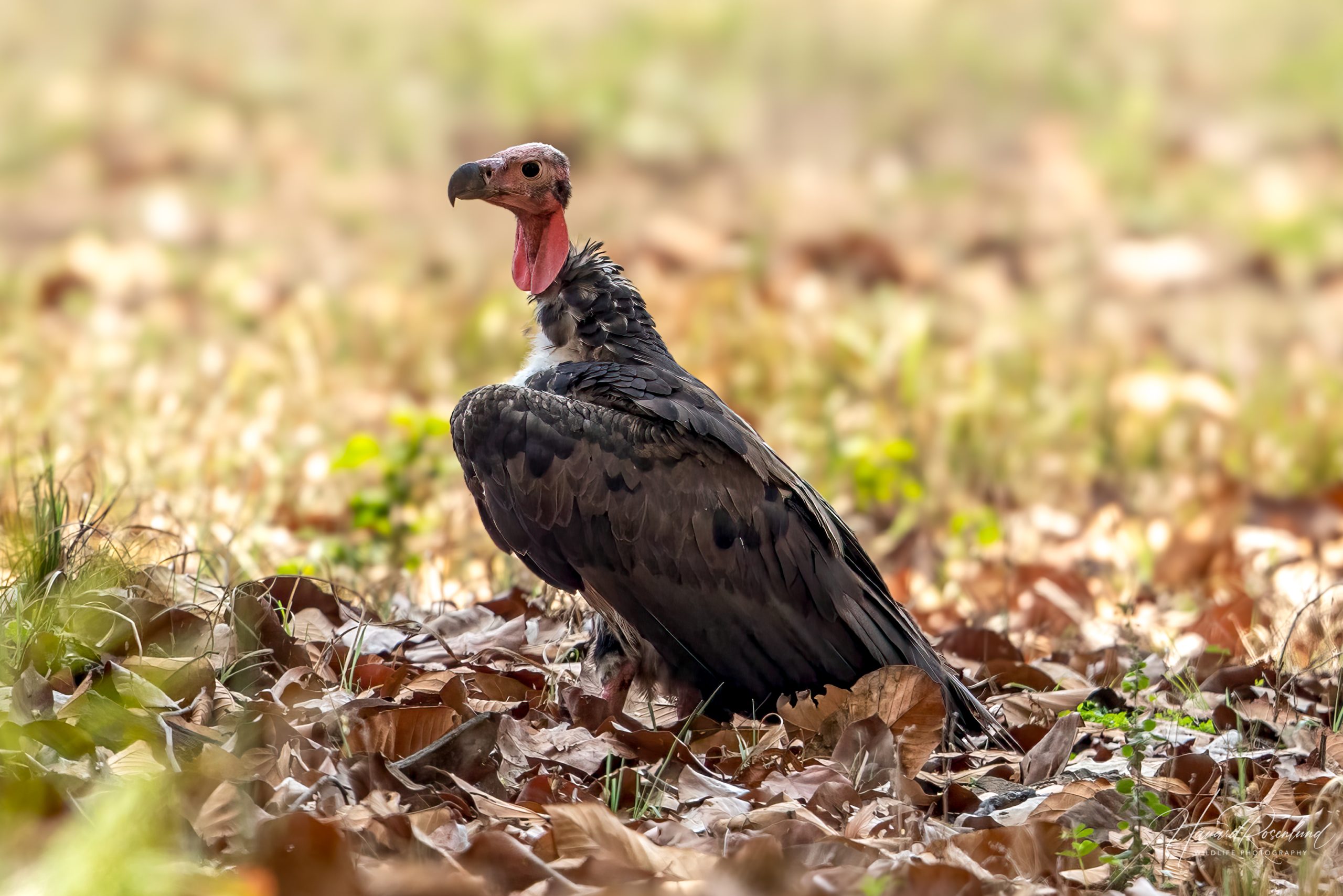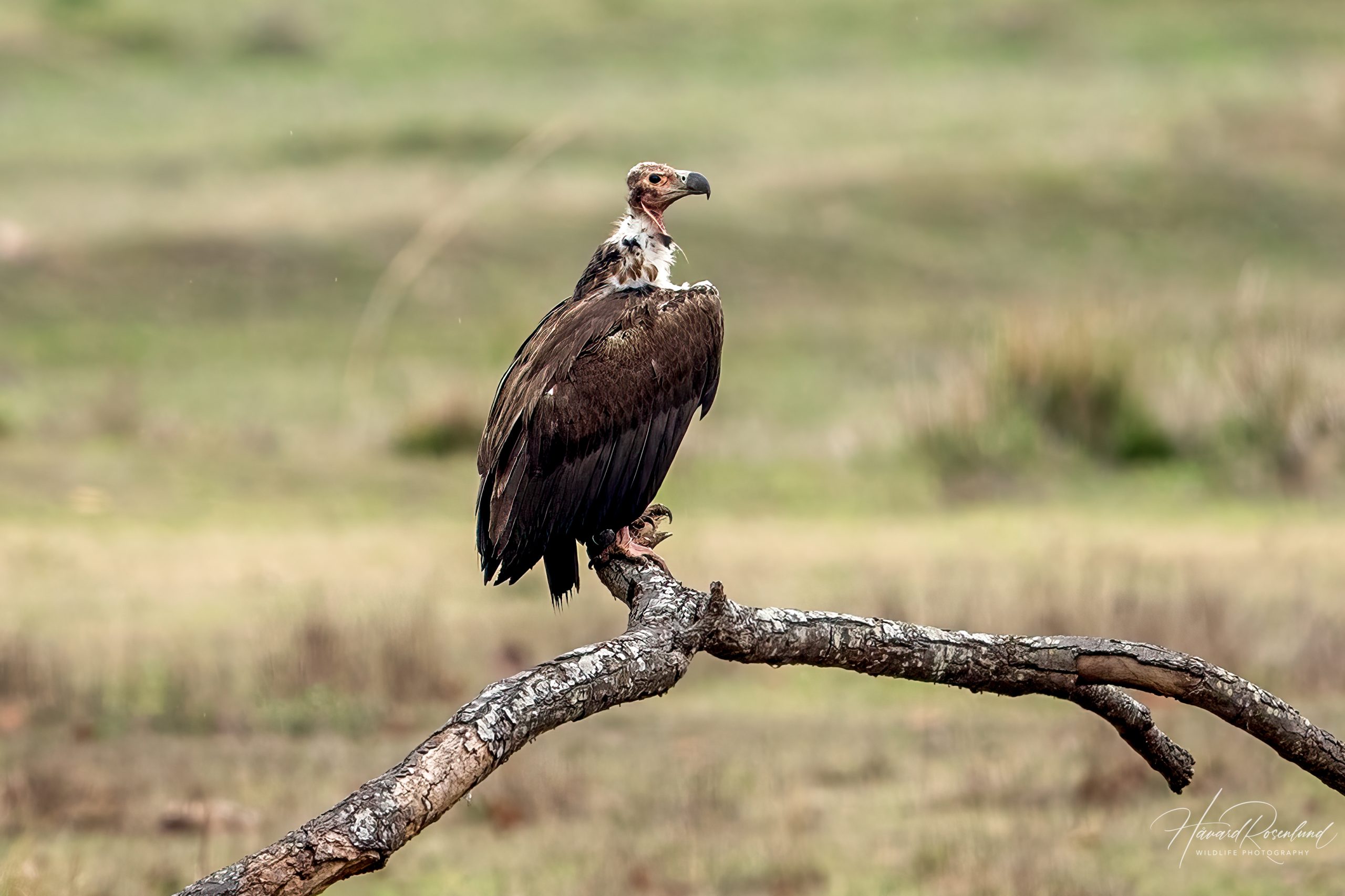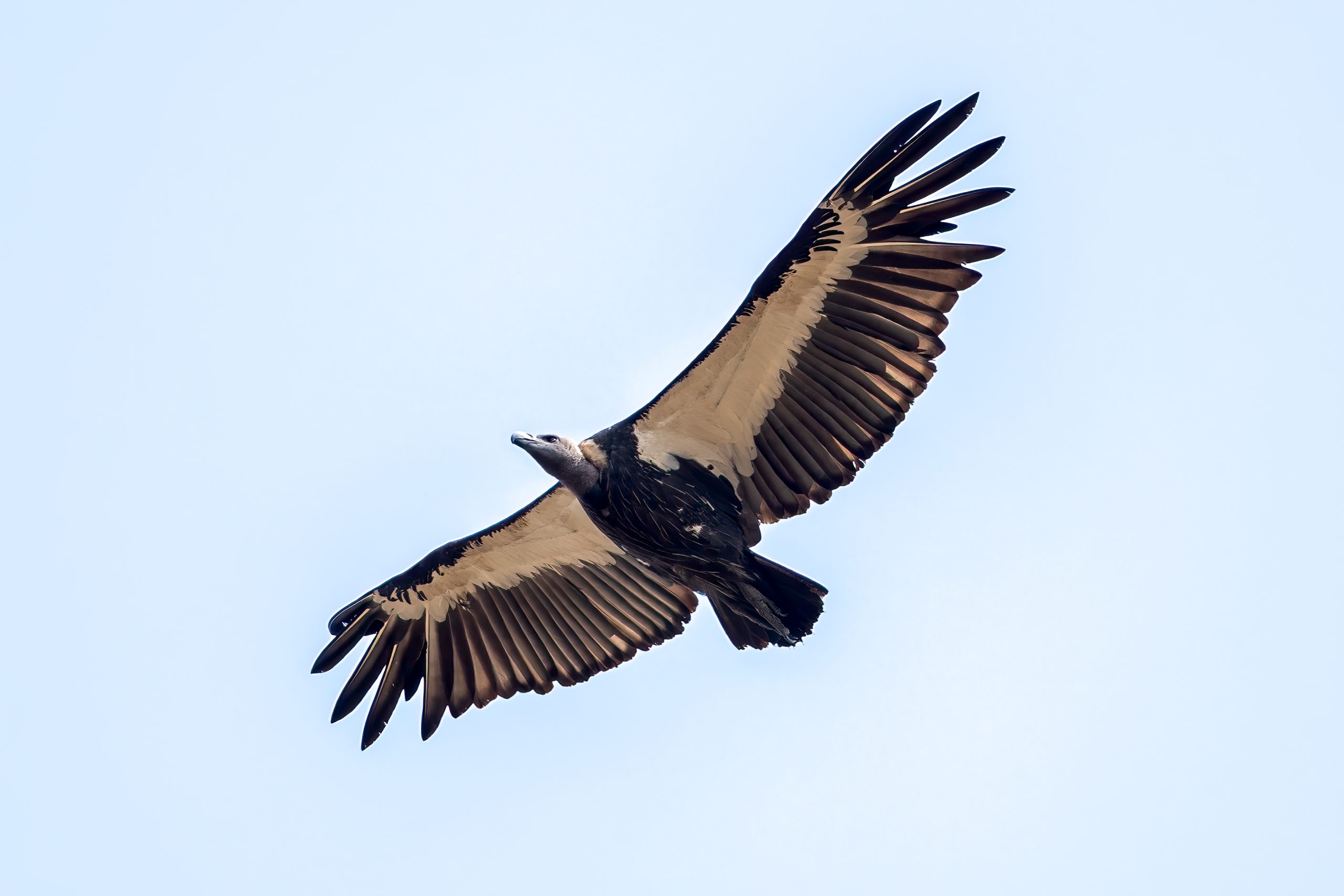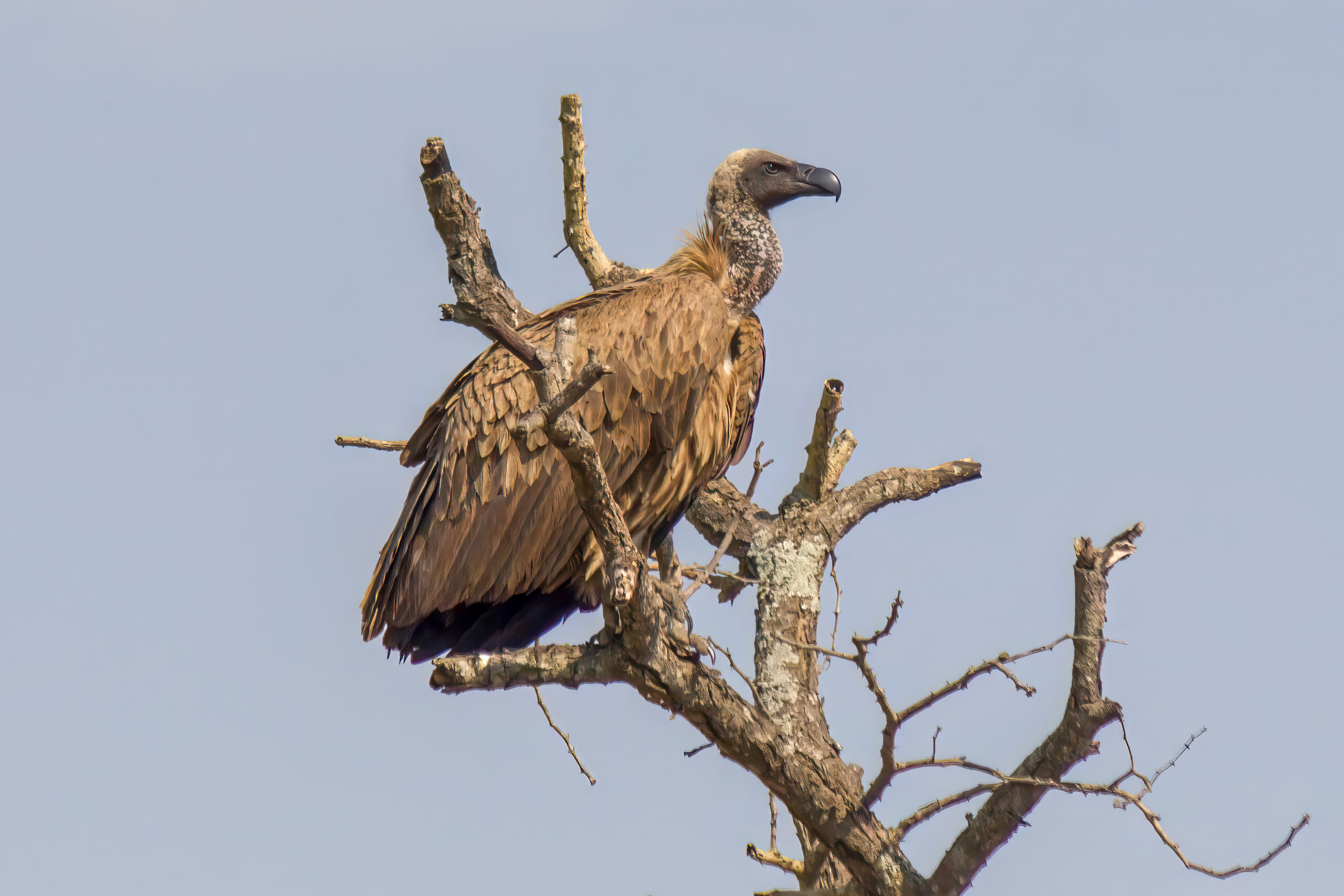Description
The red-headed vulture (Sarcogyps calvus) is a large bird of prey native to the Indian subcontinent and Southeast Asia. Males and females are similar in appearance but differing slightly in size, with females being larger. Adult red-headed vultures are distinguished by their red, bare head and neck, contrasting sharply with their dark plumage. The body is predominantly black with white patches on the underwing. As a vulture, this species is medium-sized, with a wingspan reaching up to 2.6 meters (8.5 ft) and a body length of about 75-85 cm (29.5-33.5 in). The red head and skin flaps on the neck are distinct features, separating it from most other species of vulture.
Diet & habitat
The red-headed vulture inhabits open country, forests, and foothills, and can be found at elevations up to 2,500 meters (8,200 feet). It prefers areas near human settlements, where it can easily find food. This species primarily feeds on carrion, playing a crucial role in the ecosystem by consuming dead animals and thus preventing the spread of diseases. Red-headed vultures have powerful beaks adapted to tearing flesh and are often one of the first to arrive at a carcass, capable of accessing meat that other scavengers cannot reach. They use their strong bills to tear open tough hides, which helps other scavengers access the carcass. The bare head and neck are adaptations to its diet, reducing the risk of feather contamination from carcasses.
Behavior
Red-headed vultures are generally solitary or found in pairs, unlike some other vulture species that form large groups. They are known for their strong flight capabilities, soaring high in the sky while searching for food. This vulture is also notable for its territorial behavior, often defending its feeding sites aggressively against other vultures and scavengers. They are diurnal, spending most of the day in flight or perched on trees and cliffs, surveying their surroundings.
Nesting
The breeding season of the red-headed vulture varies geographically but generally occurs from November to March. They build their nests in tall trees or on cliffs, preferring secluded locations away from human disturbance. The nest is made of sticks and lined with softer materials. Females lay a single egg per breeding season, which is incubated by both parents for about 45-50 days. After hatching, the chick remains in the nest for several months, with fledging occurring around 3-4 months of age. Both parents are involved in feeding and caring for the chick until it is ready to leave the nest.
Status & Threats
The red-headed vulture is listed as critically endangered on the IUCN Red List, primarily due to a rapid decline in its population. Its numbers has declined by over 90% in some areas since the 1990s. This decline is attributed to habitat loss, food scarcity, and poisoning from carcasses treated with the veterinary drug diclofenac, which is toxic to vultures. Conservation efforts include banning the use of diclofenac in veterinary medicine in several countries and creating vulture-safe zones. Captive breeding programs and public awareness campaigns are also crucial in the ongoing efforts to save this species from extinction.





